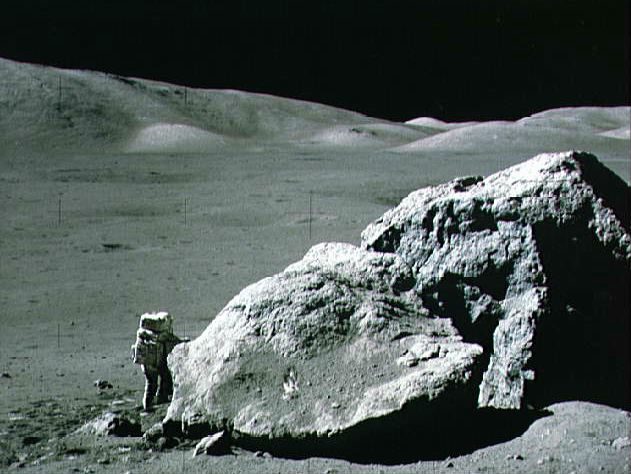

Mankind has
been fascinated with the Moon for thousands of years. The Moon is our closest
neighbor, and is the brightest object in the night sky. Ever since
man first observed the Moon, he has been fascinated with its shifting cycles
and the great mysteries it held. It was considered a goddess by many
ancient civilizations including the Romans and the Egyptians. In
the early 1600's when Galileo first turned a telescope to view the
moon, he discovered that the moon was mot just a big smooth ball in the
sky. Galileo saw mountains and craters on the Moon. This was
just the beginning for space exploration, not only on the Moon, but other
large bodies in the universe could also be observed much easier.
As technology increased so did the human interest. In the late 1950's
the Soviet Union sent up the first orbiters to take picture of the Moon.
The United States followed, and spent millions of dollars to land successfully
and walk on the Moon, four times. Moon exploration has continued
after a brief hiatus in the 1980's.
In 1994,
NASA launched into orbit Clementine. Originally the Clementine spacecraft
was designed to test "Star Wars" sensors and track missiles. The spacecraft
had no instruments on it to gather information about the Moon, so they
decided to use Clementine's transmitter to beam radio waves into the dark
regions of the South Pole of the Moon, as well as lighted areas. After
sweeping a 200 km path across the South Pole, the radar echo of the orbit
was altered in ways consistent with the existence of ice on the Moon. On
January 7, 1998, Lunar Prospector was launched into orbit by the United
States and is now in orbit around the Moon. The spacecraft was designed
to map the surface composition of the Moon, determine if there is Polar
ice on the Moon, measure the magnetic and gravitational fields, and study
out gassing events on the Moon. The mission will last from one year to
three, during which many experiments will be conducted to support the finding
of Clementine mission.
The latest
finding by the Lunar Prospector, which seem to confirm ice at the Lunar
poles, have sparked a new interest in establishing moon bases and colonies
on the Moon. In the future many nations are attempting to launch future
mission to the Moon, including Japan, United States, and the European Space
Agency. One such future plan was dubbed LUNOX by NASA, for "Lunar Oxygen",
the idea was to extract oxygen from the lunar soil and establish a moon
base. The resources that the Moon has are sure to be as alluring as the
gold rush of the 19th century a lot of problems have to be worked out by
governments and private interest groups before the resources can be developed
and commercialized.
I.
The Past
1. Background Information
2. Origin of the Moon
3. Ancient History
4. Exploration
II.
The Present
1. Introduction
2. Location of the Moon
3. Clementine
4. Prospector
5. Conclusion
III.
The Future
1. Introduction
2. Manned Station Possibility
3. Lunar Resources
4. Future Missions
5. Conclusion
Phases of the Moon ----What is the Current Phase
Spacefuture.com
Permanent.com
Scientific American
Moon
Home Page-NASA

Last modified: 05/23/1998